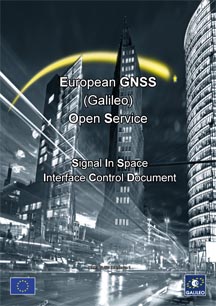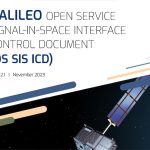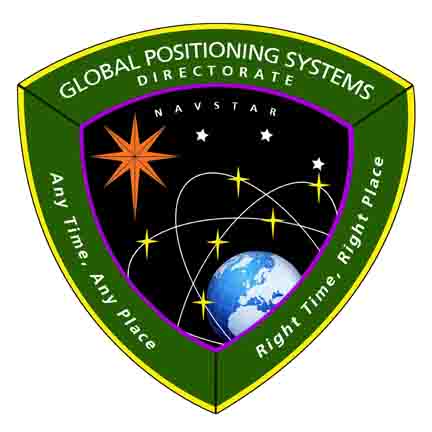
Today’s (April 13) release of an updated “Galileo Open Service Signal-In-Space Interface Control Document” (OS SIS ICD) freed the key specification document in two senses of the word: receiver manufacturers, application developers and service providers may now use the ICD as an official — not draft — guide to their work, and they may do so at no cost
The t’s have been crossed and the i’s dotted to the satisfaction of lawyers and politicians — and the relief of designers and system integrators eager to begin work on Galileo-capable products without fear of having substantive changes in the specifications and legal or financial difficulties for moving ahead.
Today’s (April 13) release of an updated “Galileo Open Service Signal-In-Space Interface Control Document” (OS SIS ICD) freed the key specification document in two senses of the word: receiver manufacturers, application developers and service providers may now use the ICD as an official — not draft — guide to their work, and they may do so at no cost
The t’s have been crossed and the i’s dotted to the satisfaction of lawyers and politicians — and the relief of designers and system integrators eager to begin work on Galileo-capable products without fear of having substantive changes in the specifications and legal or financial difficulties for moving ahead.
The European Commission (EC) is granting free access to the technical information on the future Galileo open service signal, which specifies the interface between the Galileo space and user segments. Anyone who wishes to use the intellectual property rights contained in the OS SIS ICD can simply send an e-mail to <oss-icd@ec.europa.eu> mentioning their request for a license agreement, which is without any exclusivity or geographical limitation.
Well, maybe not quite all that simple. A template for a license contract is appended as Annex E and licensees are required to “development plan” and update this on a yearly basis. The ICD itself can be downloaded from the EC Enterprise and Industry Directorate-General website.
Almost all of the critical technical aspects have been completed for a long time. A first draft OS SIS ICD was published May 19, 2006, and a revised version, February 14, 2008. Manufacturers with contracts with ESA or EU agencies have been able to build equipment using compatible technical specifications, and several receiver manufacturers had received permission to build and sell equipment that was compatible with the draft ICDs.
The European Space Agency (ESA) has had a Galileo ICD that enabled it to let contracts in recent years for the in-orbit validation (IOV) and full operational capability (FOC) space and ground segments. In short, the technical engineering aspects been of the ICD were wrapped up long before the legal and political ones.
Intellectual property rights (IPR) and the associated options for a financing a post-FOC private operator (or concessionaire) of Galileo provided substantial sticking points to the approval process. In fact, the term IPR appears six times in the “Terms of Use and Disclaimers” section that prefaces the document and more than 25 times in the annex that follows the body of the ICD.
Central among these IPRs are the patents on the signal codes and associated techniques used in generating the Galileo signals: memory codes and secondary codes (both held by ESA), and “chaotic” codes and their generation, as well as the “method and generator for generating a spread-spectrum” composite binary offset code or CBOC (held by the EU). An article in the September 2006 issue of Inside GNSS, “The Galileo Code and Others,” discusses many of the technical issues involved in selection of these codes.
Moreover, the expansion of the European Union (EU) to 27 member states raised the bar on the consensual process underlying collective decisions on Galileo. Signatures signing off on the ICD and related policies issues needed to be obtained by many more nations than the 15 members who agreed to the foundational documents establishing and financing the program early in the 2000s.
The authorized ICD announced today was completed in February and contains a few discrete, but important alterations:
· an update of the “Terms of Use and Disclaimers” section, namely, the licensing policy for R&D and standardization purposes as well as commercial purposes
· assignment of the primary and secondary codes to satellites in section in section 3.6, although these are subject to change
· more details on the I/NAV alert page content in section 4.3.2.3.
· clarification of the power sharing between the different Galileo signal components in section 2.7.1.
· addition of Galileo E1 subcarriers plots in section 2.3.3
· clarification that Galileo E5a and E5b signals can be processed as QPSK signals in section 2.3.1.2
· addition of the CBOC modulation, “lossless atmosphere” assumption removed from Tx power definition (issue under study), search and rescue (SAR) data, update of the bit allocations of some F/NAV and I/NAV pages, editorial corrections, and so forth.
The ICD is organized into five chapters and several annexes and introductory sections, containing 15 figures and 81 tables. Chapter 1 provides the scope of the document and an overview of the Galileo system. The other chapters cover the signal-in-space radio frequency characteristics, characteristics of the spreading codes, the message structures, and the navigation message data contents.
Although the 216-page document can be used to build equipment, design software, and plan applications, it contains an practical caveat: “The present document is subject to evolution, and the information contained in it may change. It is therefore recommended that a reconfigurable approach for the Galileo receivers be adopted by the manufacturers, in order to easily adapt the receivers’ architecture to the possible changes which might occur in the future.”





